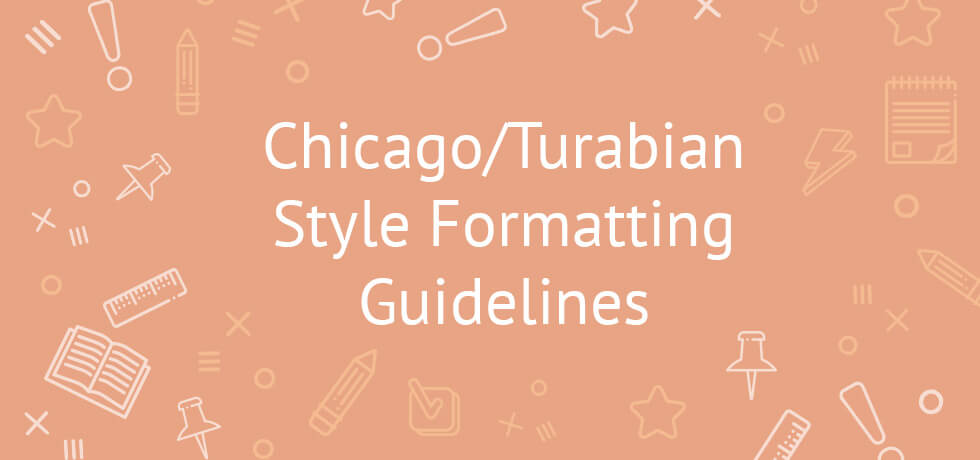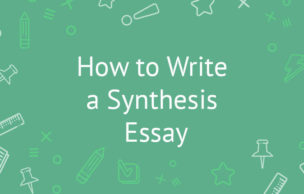Chicago/Turabian Style Formatting Guidelines

What Are Chicago/Turabian Style Papers?
The Chicago Manual of Style, often abbreviated as CMS, is extensively utilized in works of social disciplines as well as historical periodicals. Chicago/Turabian is regarded as one of the most frequently used and well-established formatting styles in the US.
Chicago/Turabian Style Structure Requirements
In general, when writing a paper in the Chicago/Turabian style, you must stick to the following requirements:
- Utilize a plain font. In general, it’s advisable to use Times New Roman 12 pt.
- Use double spacing, apart from when you add block quotations.
- Margins should be of 1”.
- Do not add spaces between paragraphs.
- Write your surname and the page number on the upper right side of each page.
- The title page is not numbered. On the first page of the paper, write the number 2.
- When using the Chicago/Turabian format, you must include annotations for rewritten or reproduced excerpts.
Chicago/Turabian papers include Title Page, Main Body, and References. Start with the title page, also referred to as the cover page. Next, write the main body of the essay. Finish by introducing the bibliography, which consists of all the references you utilized in your study.
Title Page
When writing the title page, spacing is of the essence. You should ask your professor to give you the particular requirements regarding the outline of the cover page. As a general rule, stick to the following requirements:
- Write the title 1/3 down the page. In case your title exceeds one row, use double spacing.
- Your full name must be written in the middle of the title page. Don’t forget to center it!
- Write the class number, the professor’s name and the date 2/3 down the page. Each of these elements ought to be written in distinct rows. Use double spacing.
How to Use In-Text References
In the Chicago/Turabian formatting style, references in brackets ought to follow the rules listed below:
- Include the author’s surname, issuing date and page number.
- Do not use acronyms.
- Do not add any punctuation marks between the author’s surname and the issuing date.
- Between the year and page number, you ought to place a comma.
- References in brackets ought to follow straightforward quotations. In case of rewritten data, you should utilize annotations.
- If the author is unknown, utilize an abbreviated title of the work.
- If you quote the same pages of a work, you must only specify the entire work after the last citation.
- In this citation style, the rule is that you must add references after each quotation, which may become superfluous. Add as few references as possible. However, keep in mind that using too many references is preferable to using too few.
“It is not right to regard philosophy as a fundamental discipline in high schools and colleges. If an individual does not comprehend the basic principles of philosophy, they will always be incapable of acknowledging the greater purpose and value of the discipline; therefore, introducing them to it represents a misuse of the time of both the teacher and the student. Philosophy should only be approached by those who are animated, inquiring and unquestionably gifted.” (Johnson 2005, 67)
How to Add Footnotes and Endnotes in a Chicago/Turabian Essay
As discussed earlier, in a Chicago/Turabian paper, you must add annotations or endnotes whenever you utilize a plain citation or a reworded resume of a work.
- Add annotations at the end of the page where you cite the work.
- An endnote is an anthology of work citations. It must be included at the end of every chapter or at the end of the essay.
- When writing Chicago/Turabian essays, you must utilize footnotes.1 Footnotes have a large array of advantages, the most noteworthy one being the fact that they offer swift access to data.2 It goes without saying that students find it easier to use footnotes instead of lengthy and puzzling bibliography sections, as they can comprise more data; footnotes have no disadvantages.3
- 1James Johnson, “Everything You Need to Know About the Chicago/Turabian Style: The Advantages of Using It”. Elite Essay Writers publication, 2015. While these are utilized in Chicago/Turabian papers, they are also frequently utilized in different reference styles.
- 2Johnson, “The Advantages of Using It” 56-79. A rapid and straightforward accessibility may also be provided by including a bibliography section at the end of the paper. Nevertheless, research has demonstrated that not many students read it. On the other hand, a lot of them look at the footnotes written at the end of each page.
- 3 Ibid. This may constitute an imprecise assertion, as footnotes are known to present a disadvantage which is not approached in the paper: the reader might be distracted from the point of the essay.
3 Ibid. This may constitute an imprecise assertion, as footnotes are known to present a disadvantage which is not approached in the paper: the reader might be distracted from the point of the essay.
Chicago/Turabian Papers Bibliography Section
The Chicago/Turabian reference section must be included at the end of the essay. This section enumerates all of the works you used, including the ones you mentioned using annotations. Here are the requirements for the reference section:
- Use alphabetic order.
- In the upper side of the page, add the word “Bibliography” and center it.
- Add all of your sources. Also, list other pertinent works.
How to Add References
- Names: Write both the surname and the first name.
- Titles: For lengthier sources like books or periodicals, use italics. For shorter sources like articles, chapters or pieces of poetry, use quotes.
- Issuing Data: Mention the publishing company first. Then add the periodical name.
- Punctuation marks: All important components must be separated using periods.
Books (single author)
- Annotation 1: James Johnson, The Chicago/Turabian Style: How to Use It. (London: Elite Publishing, 2010), 20-29.
- Annotation 2: James Johnson, The Chicago/Turabian Style, 11.
- Bibliography: Johnson, James. The Chicago/Turabian Style: How to Use It. London: Elite Publishing, 2010.
Books (multiple authors)
- Annotation 1: John Anderson and Robert Williams, Essay Writing: How to Do It, 2013-2016 (London: Elite Writings, 2015), 94.
- Annotation 2: Anderson and Williams, Essay Writing, 76-54.
- Bibliography: Anderson, John and Williams, Robert. Essay Writing: How to Do It, 2013-2016. London: Elite Writings, 2015
Chapter (Included in a book)
- Annotation 1: Paul P. Arnold, “How I Became a Star.” In The Road to Fame: Amazing Showbusiness Figures. (San Francisco: Elite Press, 2007), 46.
- Annotation 2: Arnold, Paul P. “Became a Star”, 67-70.
- Bibliography: Arnold, Paul P. “How I Became a Star.” In The Road to Fame: Amazing Showbusiness Figures. 67-70. San Francisco: Elite Press, 2007.
E-Book
- Annotation 1: Andrew Steel, The Path to Success (London: Elite Publishing, 2011), Kindle version.
- Annotation 2: Steel, (The Path to Success*.
- Bibliography: Steel, Andrew. The Path to Success. London: Elite Publishing, 2011. Kindle version.
Periodical Article
For such entries, you should only mention particular pages in the annotation. However, in the reference section, you must mention the entire range of the particle.
- Annotation 1: Bernard White, “How to Write Great Essays” Elite Essay Magazine 95 (1056): #135.
- Annotation 2: White, “Essays,” 102.
- Bibliography: White, Bernard. “How to Write Great Essays.” Elite Essay Magazine #135 (1056): 95-105.
Website
Websites (including academical articles) can be cited either in the text or as annotations. If you do this, you don’t need to mention them in the reference section. For instance: (“Towards the end of 2017, work on the fortification separating the US and Mexico will begin, as mentioned on the US Government website…”). In case you need to add a more official reference, there are no specific requirements. Add the date when you accessed the website or, if possible, the date when the website was last modified.
- Annotation 1: “Chicago/Turabian Style Format.” Last modified March 24, 2017, {link}
- Annotation 2: “Chicago/Turabian Style Format.”
- Bibliography: Chicago/Turabian. “Chicago/Turabian Style Format.” Last modified March 24, 2017. {link}
Can You Now Write a Chicago/Turabian Essay?
If you don’t feel ready yet, we can offer you a great solution. Access Elite Essay Writers and hire one of our many professional essay writers. All of our writers are highly proficient in using the Chicago/Turabian formatting style in essays. You can either order a brand-new essay, or ask us to edit or proofread an essay you’ve already written. We’re always ready to help!





